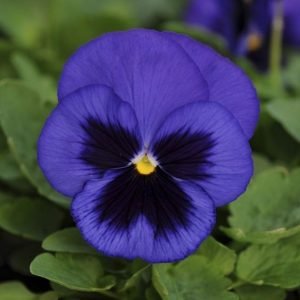Pansy plant , Viola x wittrockiana – (Any colour)
1)Name of Plant ( common Name/ scientific name)- Pansy/ Viola x wittrockiana
2) Type of plant (Indoor/outdoor)- Outdoor
3) Size of pot it comes in- 5 inches
4) Seasonal/ perennial- perennial
5) Flowering/ Foliage-Flowering
6) Place to keep- Bright direct sunlight for a few hours
678 in stock
₹176.00 ₹300.00
678 in stock
-
All Plants, Flowering Plants, Ornamental Plants, Outdoor Plants
Pansy plant , Viola x wittrockiana – (Any colour)
-41% All Plants, Flowering Plants, Ornamental Plants, Outdoor Plants
All Plants, Flowering Plants, Ornamental Plants, Outdoor PlantsPansy plant , Viola x wittrockiana – (Any colour)
1)Name of Plant ( common Name/ scientific name)- Pansy/ Viola x wittrockiana
2) Type of plant (Indoor/outdoor)- Outdoor
3) Size of pot it comes in- 5 inches
4) Seasonal/ perennial- perennial
5) Flowering/ Foliage-Flowering
6) Place to keep- Bright direct sunlight for a few hours
SKU: n/a
Pansy Plant
Pansy Plant Description
The pansy plant is a type of large-flowered hybrid plant cultivated as a garden flower. It is derived by hybridization from several species in the section Melanium of the genus Viola, particularly Viola tricolor, a wildflower of Europe and western Asia known as heartsease .
Plant Specifications
| Common Name | Pansy |
| Maximum Reachable Height | 23 cm tall |
| Flower Color | Any colour |
| Bloom Time | winter |
| Difficulty Level | easy |
Pansy Plants thrive best in sunny or partially sunny spots with well-draining soils. Furthermore Pansies are technically perennial but often live as biennials or annuals due to their tendency to become leggy. However in their first year, they focus on growing lush foliage and saving the bloom and leave seed production for their second year. And after this cycle, they gracefully exit like an annual. Thanks to careful human breeding, many garden pansies bloom fully in their first year and with some even flowering as early as nine weeks after planting seeds.
Pansy Plant Care
Light Requirement
full sun or partial shade.
Soil
They like rich and well-drained soil high in organic matter.
Watering
- Consistent moisture keeps pansy blossoms soft and supple, but roots won’t tolerate soggy soil.
- In addition water pansies regularly through the growing season, but allow soil to dry slightly between watering.
- Moreover the drier soil conditions also help pansies harden off and tolerate cold.
Application of Fertilizer for Pansy Plant
- Incorporate a granular fertilizer for your pansy into the top 4 to 6 inches of soil at planting time.
- In addition use a general-purpose granular fertilizer with a ratio such as 5-10-5 or 10-10-10, applied at a rate of 1 teaspoon of fertilizer for every square foot of planting area.
Re-potting
- Selecting of pot with good drainage hole.
- Furthermore make a good potting mixture with organic soil.
- Also place the pansy plant half inch below the soil.
- Lastly cover the other top layer with the soil.
Uses
Pansies are highly valued in gardening and landscaping for their vibrant colors and intricate patterns, making them a popular choice for borders, containers, and flower beds, enhancing visual appeal. However beyond the garden, they find frequent use in decorative floral arrangements and bouquets, prized for their attractive appearance and ability to maintain freshness in both fresh and dried forms. Moreover in culinary arts, their edible flowers serve as delightful garnishes for salads, desserts, and beverages, imparting a delicate and colorful touch to culinary creations. Furthermore in traditional herbal medicine, pansies have historically been utilized for treating skin conditions, respiratory ailments, and inflammation, though contemporary scientific validation of these benefits remains limited.
Symbolically, pansies are employed to convey sentiments of thoughtfulness, remembrance, and admiration, often included in gifts and memorials for their profound associations. Additionally, pansies play pivotal roles in botanical research and education due to their ease of cultivation and the variability of their flower colors and patterns, making them valuable subjects in both experimental studies and breeding programs aimed at developing new varieties.
Based on 0 reviews
Be the first to review “Pansy plant , Viola x wittrockiana – (Any colour)”
You must be logged in to post a review.







There are no reviews yet.